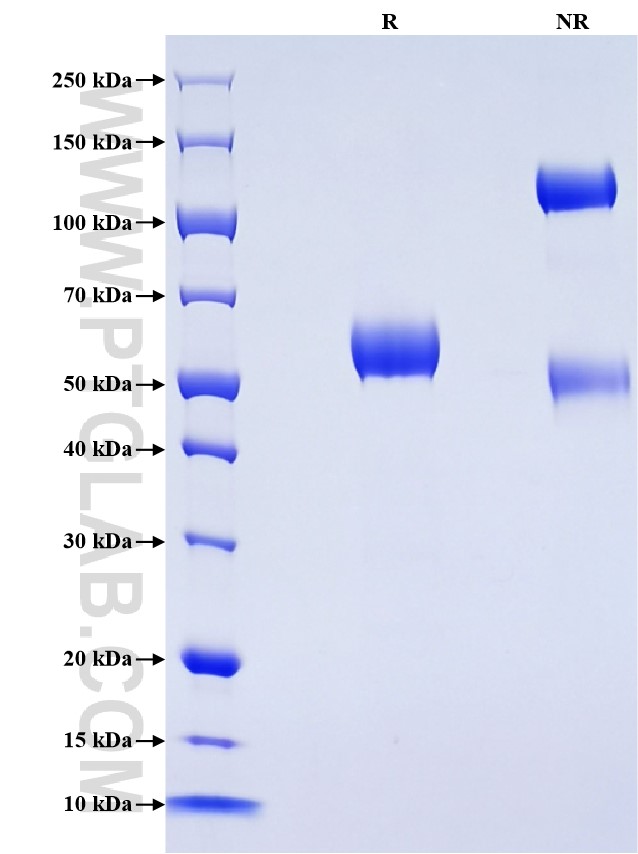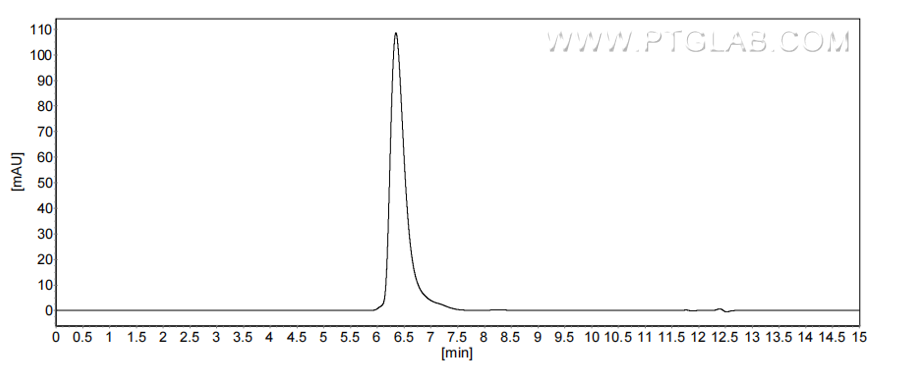Recombinant Mouse SLAMF7/CD319 protein (rFc Tag)(HPLC verified)
种属
Mouse
纯度
>90 %, SDS-PAGE
>90 %, SEC-HPLC
标签
rFc Tag
生物活性
未测试
验证数据展示
产品信息
| 纯度 | >90 %, SDS-PAGE >90 %, SEC-HPLC |
| 内毒素 | <0.1 EU/μg protein, LAL method |
| 生物活性 |
Not tested |
| 来源 | HEK293-derived Mouse SLAMF7 protein Ser23-Gly224 (Accession# Q8BHK6-1) with a rabbit IgG Fc tag at the C-terminus. |
| 基因ID | 75345 |
| 蛋白编号 | Q8BHK6-1 |
| 预测分子量 | 48.3 kDa |
| SDS-PAGE | 50-65 kDa, reducing (R) conditions |
| 组分 | Lyophilized from 0.22 μm filtered solution in PBS, pH 7.4. Normally 5% trehalose and 5% mannitol are added as protectants before lyophilization. |
| 复溶 | Briefly centrifuge the tube before opening. Reconstitute at 0.1-0.5 mg/mL in sterile water. |
| 储存条件 |
It is recommended that the protein be aliquoted for optimal storage. Avoid repeated freeze-thaw cycles.
|
| 运输条件 | The product is shipped at ambient temperature. Upon receipt, store it immediately at the recommended temperature. |
背景信息
Signaling lymphocyte activation molecule (SLAM) family receptors is a group of type I transmembrane receptors belonging to the immunoglobulin superfamily. The SLAM family contains nine members that contain an extracellular segment comprising two or four Ig-like domains (V-like variable and C2-like constant), a transmembrane region and a cytoplasmic tail. They are involved in various physiological and pathological processes, including the regulation of immunological responses and the route of viral entry. SLAMF7, also known as CS1, CRACC or CD319, is expressed on NK cells, CD8+ T lymphocytes, B lymphocytes, and mature dendritic cells. It exerts both activating and inhibitory effects depending on the expression status of SAP or EAT-2. SLAMF7 is overexpressed in multiple myeloma and makes it a target for immunotherapy.
参考文献:
1.Farhangnia P, et al. (2023) Front Immunol. 11;14:1174138. 2.Fouquet G, et al. (2018) Oncotarget. 26;9(22):16248-16262. 3.Malaer JD, et al. (2017) Am J Cancer Res. 1;7(8):1637-1641.

